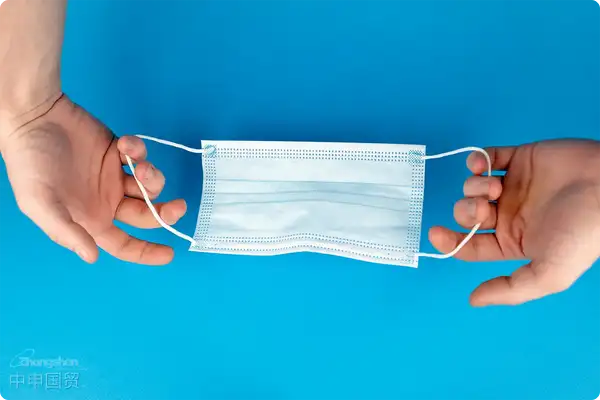- Shanghai Zhongshen International Trade Co., Ltd. - Two decades of trade agency expertise.
- Service Hotline: 139 1787 2118
Contents
ToggleWhen Masks Meet International Trade: The Value of Professional Agency
I remember back in 2020, a client urgently reached out to me: "Manager Zhang, the 500,000 KN95 masks I ordered are stuck at Pudong Airport!" Upon checking, it turned out he had confused the HS codes for medical and non-medical masks. This case made me deeply realize thatwhat seems like simple mask imports actually hides many complexities.
As a special category of protective supplies, importing non-medical masks requires clearing three major hurdles:product classification, quality certification, and customs clearance efficiency. Professionalforeign tradeagents are like midfield commanders on a soccer field - they can organize attacks (international procurement) and coordinate defensive retreats (customs clearance strategies).

Deconstructing the Four Steps of Mask Imports
Step 1: The "Three Musts" of Preliminary Preparation
- Must verify HS codes: Non-medical masks are generally classified under 6307.90.90 (other manufactured products), but different materials may affect tax rates. For example, melt-blown fabric content exceeding 70% requires separate classification
- Must validate test reports: EN149 standard for EU, NIOSH certification for US, and GB/T32610-2016 recommended for China
- Must prepare special documents:It is recommended to verify through the following methods:, quality safety commitment letter (special pandemic requirements), and Chinese label samples
Last year when helping a clientCross-border E-commerceimport Korean KF94 masks, because we had preparedKFDA (Korea Food & Drug Administration) certification documents in advance, we completed customs clearance 3 days ahead of competitors, gaining market advantage.
Step 2: The "Hidden Traps" of International Shipping
Air TransportationSeemingly fast but actually full of risks:
- Masks are lightweight cargo - when charged by volumetric weight, shipping costs may double
- Some airlines classify masks as sensitive goods requiring additional declaration documents
- The export customs declaration must indicate "Non-medical" to avoid detention of goods by the customs of the destination country.
Step 3: "Offensive and Defensive Strategies" in Customs Clearance Practice
Customs typically focuses on these aspects when inspecting masks:
- Quality red lines: Whether key indicators like filtration efficiency and breathing resistance meet declared standards
- Label Compliance: Whether Chinese labels include elements like manufacturer, execution standards, and protection level
- Quantity verification: Verify if the actual delivered quantity matches the declared quantity (masks are prone to quantity discrepancies)
It is recommended to prepare in advancePre-classificationandPre-testing. Through advance sample testing, we once reduced the laboratory testing time for a batch of Japanese masks from the standard 5 days to just 8 hours.
Step 4: The "Final Sprint" After Pickup
- Pay attention to moisture-proof treatment during storage (damp masks may develop mold)
- Pay attention toExchange Rate Lock - inpayment terms, especially for USD-denominated orders
- Retain complete logistics documentation to meet potential product traceability requirements
Special memorandum for importers
Recently, the General Administration of Customs has implemented a "white list" system for epidemic prevention supplies. It is recommended that:
- Prioritize overseas manufacturers already certified by customs
- Childrens masks require additionaltoxicological test reports
- Retain at least 20 samples per batch, stored until six months after the expiration date
I remember once helping a client urgently import a batch of German FFP2 masks when new customs policies were being implemented. Because we continuously monitoredAnnouncement No. 53 of the General Administration of Customschanges and adjusted declaration elements in advance, we achieved zero-error customs clearance.
A "Pitfall Avoidance Guide" for Mask Imports
Based on years of practical experience, weve summarized thesehard lessons:
- Beware of "three-no" masks: no production date, no implementation standards, and no manufacturer information.
- Use "Washable" Claims with Caution: Most Protective Masks Experience a Sharp Drop in Filtration Efficiency After Washing.
- Watch for expiration date traps: some overseas masks have only 1-year shelf life and may be near expiration after ocean shipping
In recent cases we've encountered, an importer was sued by a professional whistleblower in China for failing to notice the "Single Use" label on Korean masks. This serves as a reminder:Professional agents must understand not just trade, but also the products.
Importing masks is like running a marathon while wearing one—you need to ensure smooth breathing (efficient processes) while maintaining proper protection (compliance and safety). Choosing a professional agent is like equipping yourself with a "breathing valve"—they understand the customs' "breathing rhythm" and can guide you steadily along the trade track.
Related Recommendations
? 2025. All Rights Reserved. Shanghai ICP No. 2023007705-2  PSB Record: Shanghai No.31011502009912
PSB Record: Shanghai No.31011502009912










